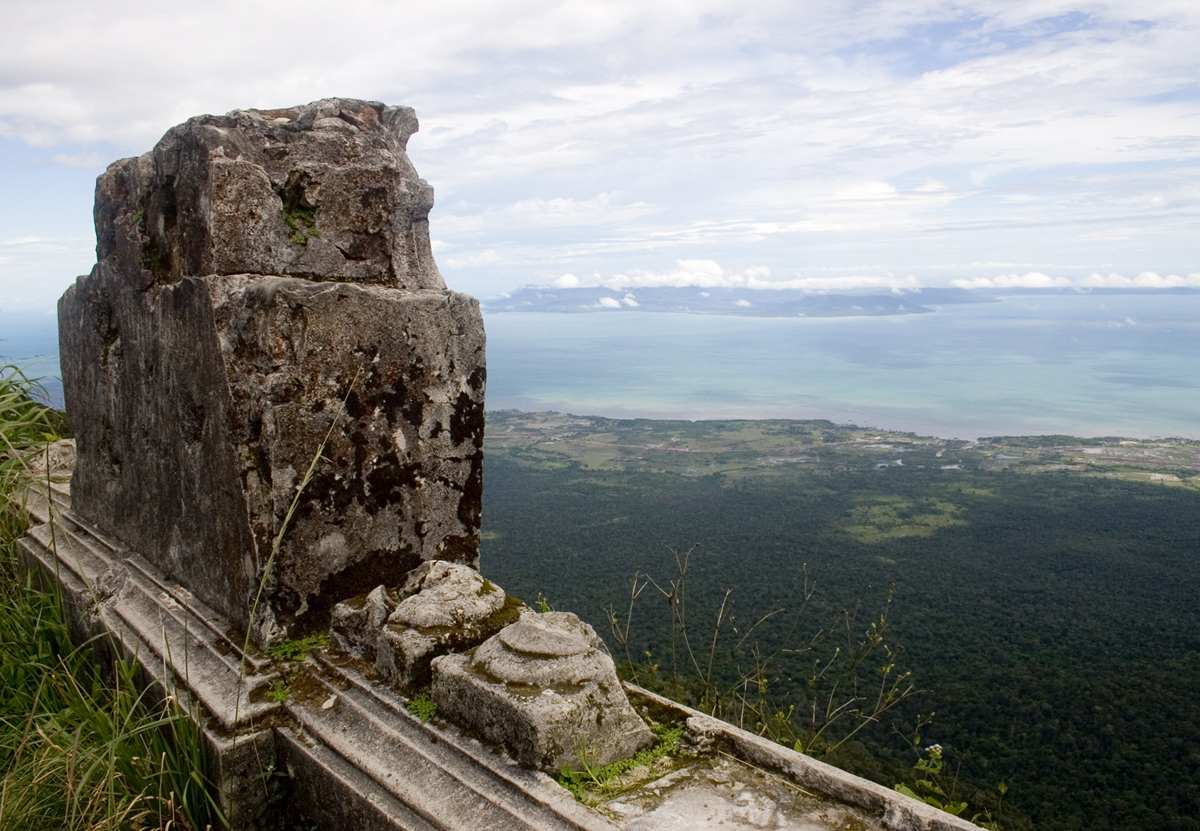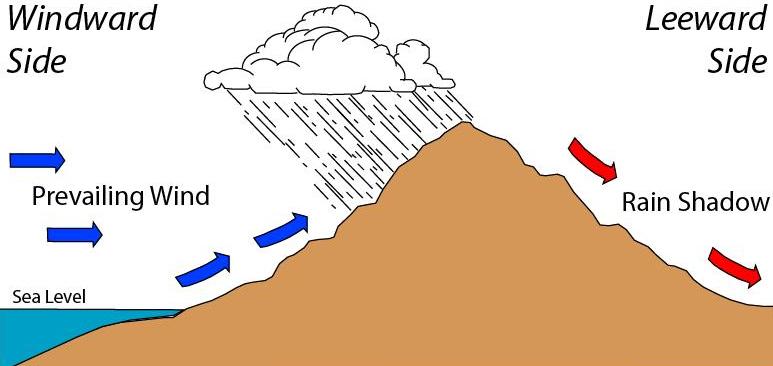|
Dâmrei Mountains
The Dâmrei Mountains (literally the "Elephant Mountains", km, ភ្នំដំរី, Chuŏr Phnum Dâmrei), refer to a mountain range situated in south-western Cambodia, traversing around north-south as a succession of the Cardamom Mountains, dropping abruptly to the sea near the town of Kampot. The Elephant Mountains represent the easternmost parts of the original extent of the wet evergreen forests that include Cambodia's south and the mountains east of Bangkok in Thailand. Description The range is a southern offshoot of the Krâvanh or Cardamom Mountains, occupying a much smaller area. The highest elevation is Phnom Bokor at above sea level. Located close to the shores of the Gulf of Siam, the densely wooded hills receive some of the heaviest rainfall in Cambodia, averaging 150–200 inches (3,800–5,000 mm) annually on their western slopes (which are subject to southwest monsoons) but only 40–60 inches (1,020–1,520 mm) on their eastern slop ... [...More Info...] [...Related Items...] OR: [Wikipedia] [Google] [Baidu] |
Cardamom Mountains
The Cardamom Mountains ( km, ជួរភ្នំក្រវាញ, ; th, ทิวเขาบรรทัด, ), or the Krâvanh Mountains, is a mountain range in the south west of Cambodia and Eastern Thailand. The majority of the range is within Cambodia. The silhouette of the Cardamom Mountains appears in the provincial seal of Trat Province in Thailand. Location and description The mountain range extends along a southeast-northwest axis from Chanthaburi Province in Thailand, and Koh Kong Province in Cambodia on the Gulf of Thailand, to the Veal Veang District in Pursat Province, and extends to the southeast by the Dâmrei (Elephant) Mountains. The Thai part of the range comprise heavily eroded and dispersed mountain fragments of which the Khao Sa Bap, Khao Soi Dao and Chamao-Wong Mountains, east, north and west of Chanthaburi respectively, are the most prominent. Dense tropical rainforest prevails on the wet westward slopes which annually receive from ... [...More Info...] [...Related Items...] OR: [Wikipedia] [Google] [Baidu] |
Preah Monivong National Park
Preah Monivong Bokor National Park ( km, ឧទ្យានជាតិព្រះមុនីវង្ស បូកគោ, ) is a national park in southern Cambodia's Kampot Province that was established in 1993 and covers . It is designated as an ASEAN Heritage Park. It is located in the Dâmrei Mountains, forming the southeastern parts of the Cardamom Mountains. Most of the park is about 1,000 metres above sealevel and the highest peak is Phnom Bokor at 1,081 metres, also referred to as Bokor Mountain. History The Dâmrei Mountains was formerly a Khmer Rouge controlled area, but in 1993, Preah Monivong National Park was inaugurated along with most other national parks in Cambodia. It is one of only two ASEAN Heritage Parks in the country. Preah Monivong National Park is well known for the abandoned Bokor Hill Station, a remote settlement build by the French colonialists in 1921. They also built a Catholic church nearby in 1928, a very rare sight in Cambodia. The park is na ... [...More Info...] [...Related Items...] OR: [Wikipedia] [Google] [Baidu] |
Bokor Hill Station
Bokor Hill Station ( km, ស្ថានីយភ្នំបូកគោ, ; french: Station d'altitude de Bokor) refers to a collection of French colonial buildings constructed as a temperate mountain luxury resort and retreat for colonial residents in the early 1920s atop Bokor Mountain in Preah Monivong National Park, about west of Kampot in southern Cambodia. Abandoned for long periods of time, modern infrastructure has made the location easily accessible as re-development is taking place. It was used as the location for the final showdown of the movie ''City of Ghosts'' (2002) and the 2004 film ''R-Point''. To the north-east are the Povokvil Waterfalls. History The Damrei Mountains have long been considered sacred and venerated by the Cambodians. The hill station was built as a resort by colonial French to help the French military who were stationed in that region. They were desperate for some relief from the oppressive heat that is characteristic to this part of the w ... [...More Info...] [...Related Items...] OR: [Wikipedia] [Google] [Baidu] |
Endemic
Endemism is the state of a species being found in a single defined geographic location, such as an island, state, nation, country or other defined zone; organisms that are indigenous to a place are not endemic to it if they are also found elsewhere. For example, the Cape sugarbird is found exclusively in southwestern South Africa and is therefore said to be ''endemic'' to that particular part of the world. An endemic species can be also be referred to as an ''endemism'' or in scientific literature as an ''endemite''. For example '' Cytisus aeolicus'' is an endemite of the Italian flora. '' Adzharia renschi'' was once believed to be an endemite of the Caucasus, but it was later discovered to be a non-indigenous species from South America belonging to a different genus. The extreme opposite of an endemic species is one with a cosmopolitan distribution, having a global or widespread range. A rare alternative term for a species that is endemic is "precinctive", which applies to ... [...More Info...] [...Related Items...] OR: [Wikipedia] [Google] [Baidu] |
Orchids
Orchids are plants that belong to the family Orchidaceae (), a diverse and widespread group of flowering plants with blooms that are often colourful and fragrant. Along with the Asteraceae, they are one of the two largest families of flowering plants. The Orchidaceae have about 28,000 currently accepted species, distributed in about 763 genera. (See ''External links'' below). The determination of which family is larger is still under debate, because verified data on the members of such enormous families are continually in flux. Regardless, the number of orchid species is nearly equal to the number of bony fishes, more than twice the number of bird species, and about four times the number of mammal species. The family encompasses about 6–11% of all species of seed plants. The largest genera are ''Bulbophyllum'' (2,000 species), ''Epidendrum'' (1,500 species), ''Dendrobium'' (1,400 species) and ''Pleurothallis'' (1,000 species). It also includes ''Vanilla'' (the genus of the ... [...More Info...] [...Related Items...] OR: [Wikipedia] [Google] [Baidu] |
Illegal Logging
Illegal logging is the harvest, transportation, purchase or sale of timber in violation of laws. The harvesting procedure itself may be illegal, including using corrupt means to gain access to forests; extraction without permission, or from a protected area; the cutting down of protected species; or the extraction of timber in excess of agreed limits. Illegal logging is a driving force for a number of environmental issues such as deforestation, soil erosion and biodiversity loss which can drive larger scale environmental crisis such as climate change and other forms of environmental degradation. Illegality may also occur during transport, such as illegal processing and export (through fraudulent declaration to customs); the avoidance of taxes and other charges, and fraudulent certification. These acts are often referred to as "wood laundering". Illegal logging is driven by a number of economic forces, such as demand for raw materials, land grabbing and demand for pasture for ... [...More Info...] [...Related Items...] OR: [Wikipedia] [Google] [Baidu] |
Phnom Bokor National Park
Preah Monivong Bokor National Park ( km, ឧទ្យានជាតិព្រះមុនីវង្ស បូកគោ, ) is a national park in southern Cambodia's Kampot Province that was established in 1993 and covers . It is designated as an ASEAN Heritage Park. It is located in the Dâmrei Mountains, forming the southeastern parts of the Cardamom Mountains. Most of the park is about 1,000 metres above sealevel and the highest peak is Phnom Bokor at 1,081 metres, also referred to as Bokor Mountain. History The Dâmrei Mountains was formerly a Khmer Rouge controlled area, but in 1993, Preah Monivong National Park was inaugurated along with most other national parks in Cambodia. It is one of only two ASEAN Heritage Parks in the country. Preah Monivong National Park is well known for the abandoned Bokor Hill Station, a remote settlement build by the French colonialists in 1921. They also built a Catholic church nearby in 1928, a very rare sight in Cambodia. The park is na ... [...More Info...] [...Related Items...] OR: [Wikipedia] [Google] [Baidu] |
Black Pepper
Black pepper (''Piper nigrum'') is a flowering vine in the family Piperaceae, cultivated for its fruit, known as a peppercorn, which is usually dried and used as a spice and seasoning. The fruit is a drupe (stonefruit) which is about in diameter (fresh and fully mature), dark red, and contains a stone which encloses a single pepper seed. Peppercorns and the ground pepper derived from them may be described simply as ''pepper'', or more precisely as ''black pepper'' (cooked and dried unripe fruit), ''green pepper'' (dried unripe fruit), or ''white pepper'' (ripe fruit seeds). Black pepper is native to the Malabar Coast of India, and the Malabar pepper is extensively cultivated there and in other tropical regions. Ground, dried, and cooked peppercorns have been used since antiquity, both for flavour and as a traditional medicine. Black pepper is the world's most traded spice, and is one of the most common spices added to cuisines around the world. Its spiciness is due to the ch ... [...More Info...] [...Related Items...] OR: [Wikipedia] [Google] [Baidu] |
Cambodia
Cambodia (; also Kampuchea ; km, កម្ពុជា, UNGEGN: ), officially the Kingdom of Cambodia, is a country located in the southern portion of the Indochinese Peninsula in Southeast Asia, spanning an area of , bordered by Thailand to the northwest, Laos to the north, Vietnam to the east, and the Gulf of Thailand to the southwest. The capital and largest city is Phnom Penh. The sovereign state of Cambodia has a population of over 17 million. Buddhism is enshrined in the constitution as the official state religion, and is practised by more than 97% of the population. Cambodia's minority groups include Vietnamese, Chinese, Chams and 30 hill tribes. Cambodia has a tropical monsoon climate of two seasons, and the country is made up of a central floodplain around the Tonlé Sap lake and Mekong Delta, surrounded by mountainous regions. The capital and largest city is Phnom Penh, the political, economic and cultural centre of Cambodia. The kingdom is an elective co ... [...More Info...] [...Related Items...] OR: [Wikipedia] [Google] [Baidu] |
Rain Shadow
A rain shadow is an area of significantly reduced rainfall behind a mountainous region, on the side facing away from prevailing winds, known as its leeward side. Evaporated moisture from water bodies (such as oceans and large lakes) is carried by the prevailing onshore breezes towards the drier and hotter inland areas. When encountering elevated landforms, the moist air is driven upslope towards the peak, where it expands, cools, and its moisture condenses and starts to precipitate. If the landforms are tall and wide enough, most of the humidity will be lost to precipitation over the windward side (also known as the ''rainward'' side) before ever making it past the top. As the air descends the leeward side of the landforms, it is compressed and heated, producing foehn winds that ''absorb'' moisture downslope and cast a broad "shadow" of dry climate region behind the mountain crests. This climate typically takes the form of shrub–steppe, xeric shrublands or even deserts ... [...More Info...] [...Related Items...] OR: [Wikipedia] [Google] [Baidu] |



.jpg)



